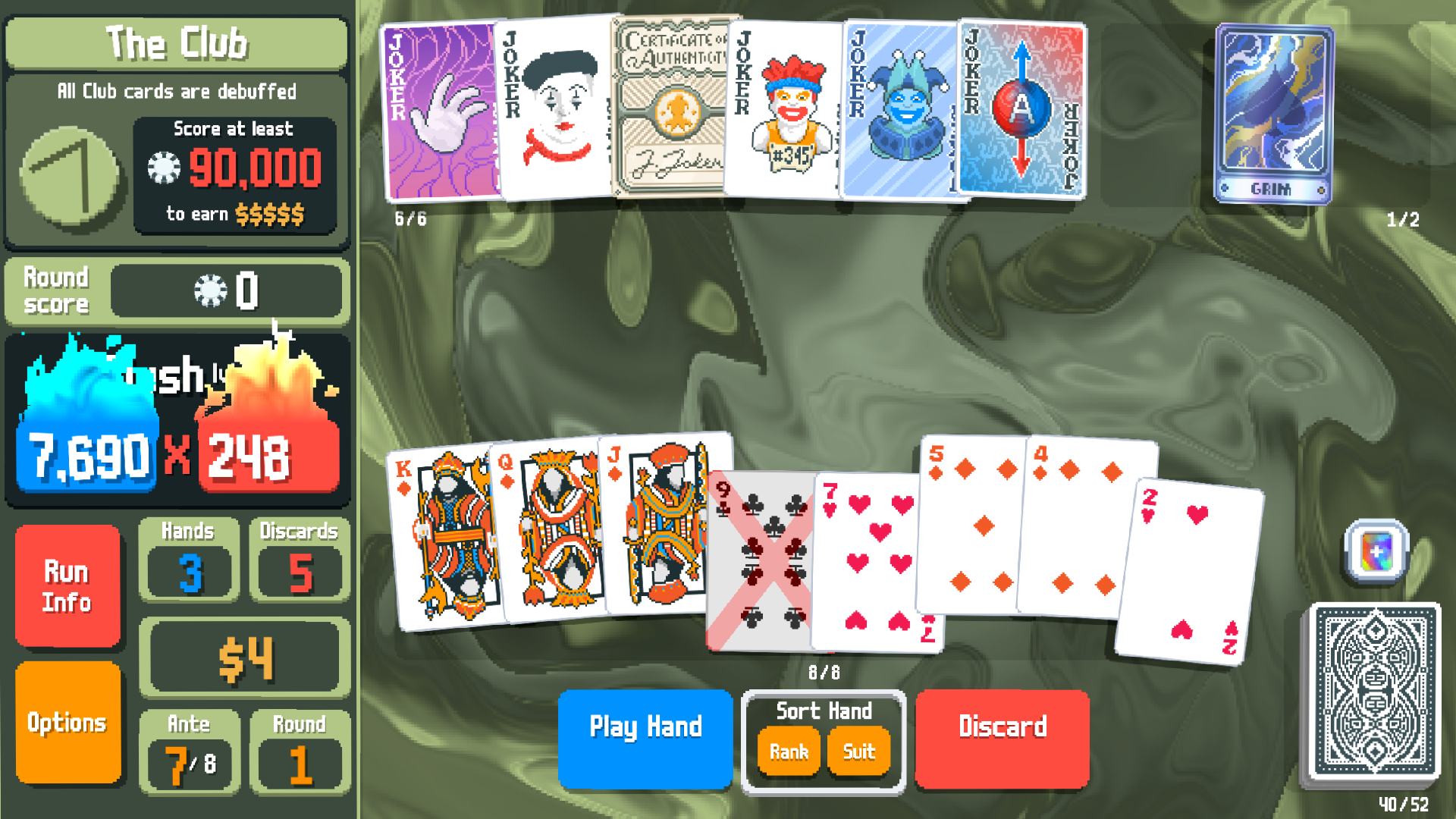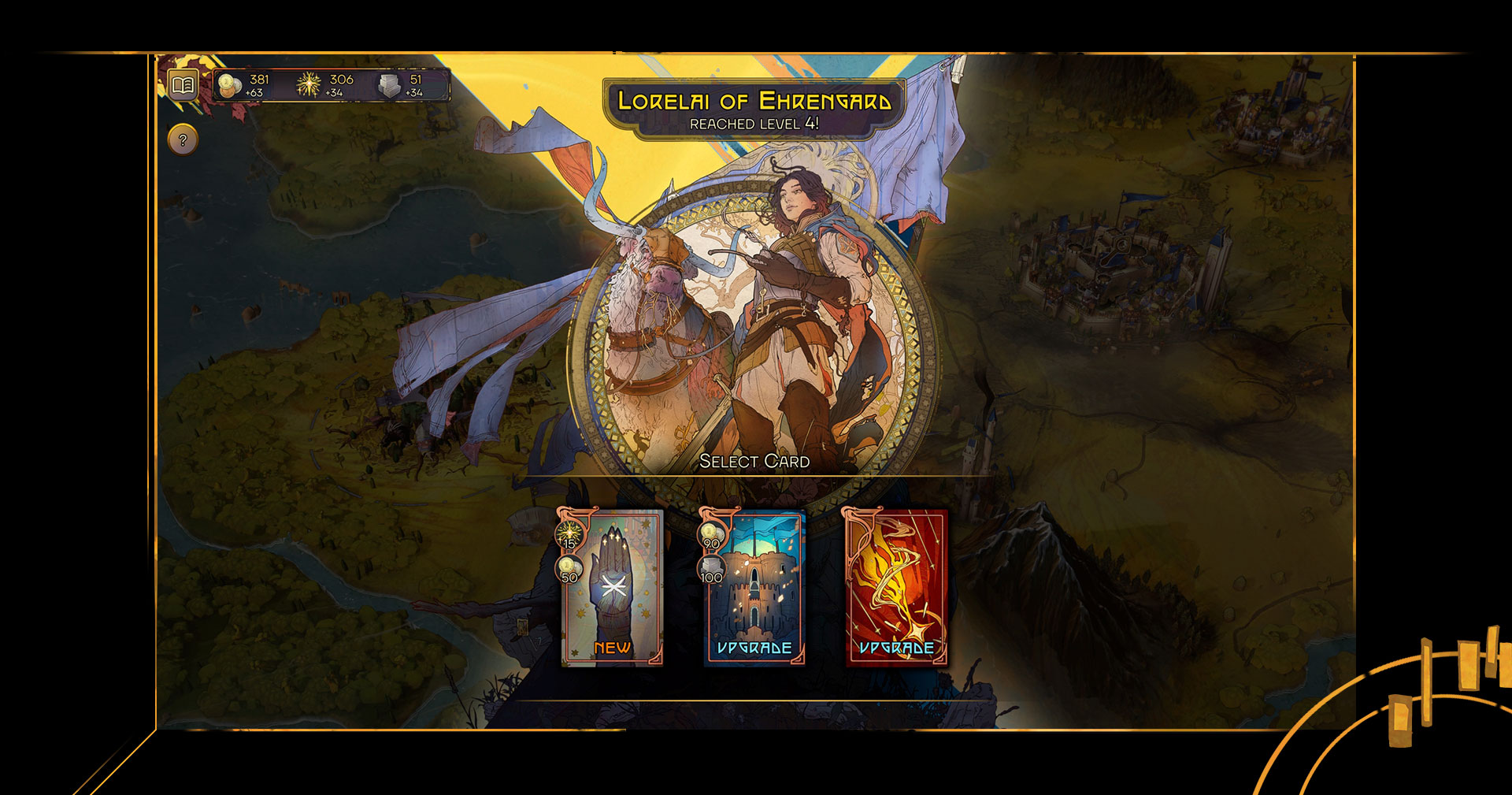
Balatro

Trading card game Magic: The Gathering has an affectionate nickname among its playerbase: cardboard crack. The game that’s captured the hearts and bank accounts of gamers around the world for 30 years has a new challenger for the title of “most addictive card game,” and that challenger is Balatro, an upcoming game which has a new demo out ahead of a Feb. 20 release. I’m already hooked.
Balatro is mischievous like its namesake clowns (balatro is the Latin word for jester or fool). The game is about making poker hands, but strips out competitive betting in favor of a straightforward, score-based system. Complex hands like Flushes and Straights score better than simpler ones like Pairs, and to beat a level the player needs to meet a score threshold using a set number of hands or fewer. It becomes immediately apparent that making good hands using a single 52-card deck is not enough to beat each round – the blinds are too high, even if one is consistently able to put together Full Houses or Four-of-a-Kinds.
To win, players must rely on Tarot, Planet and Joker cards. Tarots are one-use cards that upgrade or alter existing cards – changing hearts into spades to make Flushes easier to attain, for example. Planet cards upgrade the scoring potential for a particular hand, enabling players to focus on chaining together Straights or Pairs. Jokers increase score multipliers or have other unique effects. These cards can be purchased from a store that opens between rounds and are available in randomized packs, much like in Magic or other trading card games.
Balatro’s core mechanics are simple, but they tap into the visceral joy of seeing a big number get bigger as you build your deck. The blinds get harder as the game goes on, and I found myself playing through run after run trying to hone the perfect deck, only to have my hopes dashed just when they were highest.
Balatro is pure-grade, uncut card game crack.
Songs of Silence

Only in a videogame can a war be won in a day. Songs of Silence is a new fantasy strategy game that eschews the multi-week conquests of games like Civilization in favor of battles that play out in minutes and campaigns that play out within a few hours. During my playthrough of the game’s short Steam demo, I took a look at the game’s highly-detailed art nouveau aesthetic and its streamlined, strategic gameplay that caters to an audience on the warpath.
Set in a fantasy world ravaged by political strife and destruction by supernatural forces, Songs of Silence is an ambitious step up from Chimera Entertainment’s previous oeuvre — which is mostly mobile games and licensed titles. The art nouveau graphics, recalling the early 20th-century work of artists like Alphonse Mucha, was the first thing to catch my eye. In an interview with Creative Bloq, art director Christian Dreher pointed to Mucha's highly detailed, yet broadly accessible style as a point of inspiration.
In the limited demo content, I was exposed to a variety of art nouveau pieces depicting the heroes in my army, their military squads and the “battle cards” used to influence the game’s real-time battles. The game moves in two primary stages: a turn-based strategy stage that takes place in a wider overworld, and real-time “auto” battles where armies meet on the open field. While the turn-based overworld is familiar to me as a strategy game fan, I’m less impressed by the automatic battles which take away some strategic agency from the player in exchange for faster-moving gameplay. More depth does come later on, when players gain access to a wider array of unit types and cards, but in the early hours featured in the demo the combat sequence felt a little rote. However, the game will eventually feature 15+ playable heroes and 120+ possible combat units.
While Songs of Silence’s Steam demo is only a small taste of what looks to be a massive strategy game, it did allow me to get acquainted with the game's unique mechanics and aesthetic that set it apart from its strategy contemporaries.